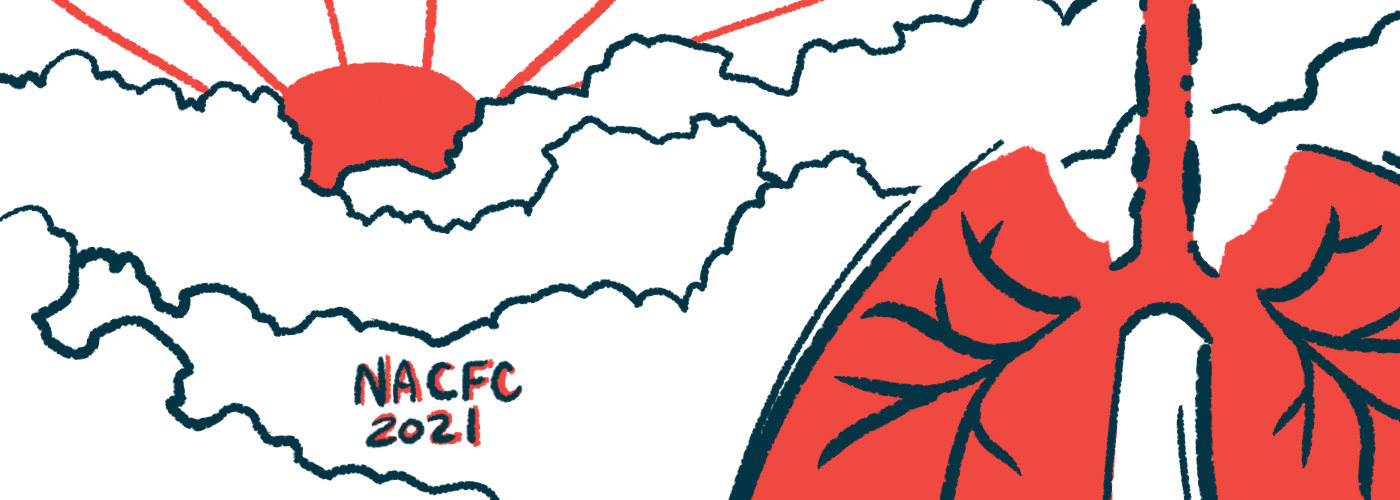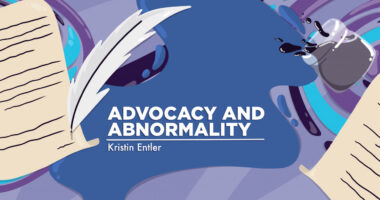#NACFC2021 – Phage Therapy, Now in Trial, Weakens Resistant Bacteria

Personalized treatment with bacteria-infecting viruses, called bacteriophages, could be used to combat Pseudomonas aeruginosa, the main bacteria involved in lung infections in people with cystic fibrosis (CF), both by killing the bacteria and making them less resistant to antibiotics.
Bacteriophage therapy “is safe, decreases P. aeruginosa titers [levels], and improves lung function,” according to researchers at Yale University, who presented results of its use at the 2021 North American Cystic Fibrosis Conference (NACFC). Their talk was titled, “Bacteriophage therapy decreases cystic fibrosis lung inflammation.”
The team is currently conducting a Phase 1/2 clinical trial, called CYPHY (CYstic Fibrosis bacterioPHage Study at Yale; NCT04684641), testing this type of therapy. The trial is actively recruiting up to 36 adults with chronic P. aeruginosa airway infections at Yale, with funding available to help select patients with travel and boarding.
Lung infections caused by Pseudomonas and other bacteria can be a serious health risk for people with CF. While some antibiotics may be effective in controlling such infections, bacteria increasingly are evolving resistance to commonly used antibiotics.
One alternative treatment approach that is gaining interest is the use of bacteriophages (sometimes called simply “phages”), which are viruses that can infect and kill specific kinds of bacteria.
“With the threat of multi-drug resistant infections, there is renewed interest in the therapeutic use of phage,” Gail Stanley, MD, a researcher at Yale, said at NACFC.
In her talk, Stanley set out to “highlight some of the clinical outcomes that we’ve observed” using phage therapy for P. aeruginosa infections in CF patients at Yale.
“First and foremost, with phage therapy, there is a decrease in bacterial titers … after therapy,” she said.
It also led to “a beneficial change in sensitivity [to antibiotics] after phage therapy” — in other words, the bacteria were less resistant to antibiotic treatment following phage therapy.
This is likely because phage therapy forces bacteria to make evolutionary trade-offs, Stanley said. Essentially, when bacteria are exposed to a phage, natural selection favors the survival of those bacteria least susceptible to the phage, so the bacterial population as a whole evolves to become more resistant to the phage. But the same attributes that help bacteria resist a phage are thought to simultaneously make them more vulnerable to antibiotics.
Exactly how this process works depends upon the exact type of phage and bacteria. As such, “you can choose your target wisely, and manipulate the bacteria to have a clinically beneficial evolutionary resistance,” Stanley said.
As an example, Stanley described a phage called OMKO1 that infects a so-called antibiotic pump protein on the surface of Pseudomonas.
“In order for the Pseudomonas to become resistant to the phage, it must decrease this antibiotic pump, and by doing so, it will sacrifice the antibiotic resistance,” she said.
In another example, the researcher noted liquid in which the bacteria were grown changed in color, from bluish-green to yellow, following treatment with a particular phage. This is because of a drop in levels of pyocyanin, a blue-colored toxin that helps the bacteria cause disease.
Consistent with these effects, experiments in cells suggest that bacteria are less inflammatory after treatment with phage therapy.
Stanley and other researchers at Yale tested the OMKO1 phage, as well as two other phages that also target bacterial components that help the bacteria cause disease and resist treatments.
The phage program at Yale involves first collecting a sample of bacteria from a patient, then testing the samples for antibiotic levels before and after treatment, and subsequently the airway surface cells for inflammation. Data from eight patients who have been treated with phage therapy at Yale showed “a significant increase in lung function after [phage] therapy,” Stanley said.
Editor’s note: The Cystic Fibrosis News Today team is providing coverage of the virtual 2021 North American Cystic Fibrosis Conference (NACFC) Nov. 2–5. Go here to see the latest stories from the conference.








